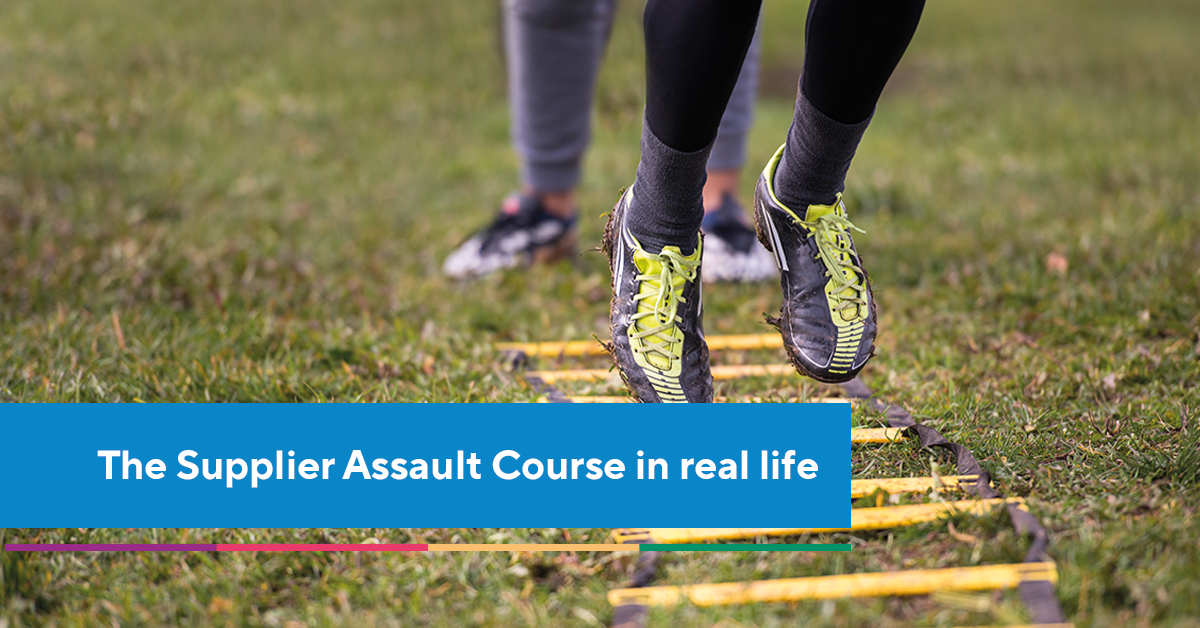For many (if not most) businesses that base their commerce on tangible goods, the importance of Supplier Engagement really can’t be overstated. Working together with suppliers, they are able to establish innovative, sustainable products that fulfil market demand and most importantly of all drive revenue.
But no matter how well they are already doing, businesses need to invest continually in making their working relationships with suppliers the best they can be; because building Supplier Engagement leads to:
- Faster new Product Development
- better quality products
- reduced supply chain risk
- a great customer experience
Building Supplier Engagement
Last week I wrote about how you can think of every task, project or initiative which involves a supplier as an assault course on the journey towards increasing Supplier Engagement and all the benefits that come with it. When you equip them with the motivation and understanding to successfully negotiate each metaphorical course, suppliers will come out the other end more engaged, a more tightly integrated part of your upstream value chain.
Over the next few weeks, we’re going to look at a real-life example; walking through the steps you might take to turn a typical supplier activity into an opportunity to improve Supplier Engagement.
Real-life example: it’s “just a survey”…
From time to time, it’s necessary to gather information from suppliers. Maybe you need to find out about their use of palm oil for your annual report, or perhaps you need them to confirm your current list of contact details is still correct so that you can be sure your communications are always going to the relevant individuals. A survey is a nice, efficient way to gather this kind of information.
A supplier’s-eye view
To begin, the first step back and consider your task (your survey, in this case) from the perspective of a supplier.
What will they have to do to complete their assignment? What questions might they have? What might hinder them?
Let’s take a look:
Step 1: Identify the Stages of your assault course
- Correct contact at the supplier receives the survey
- Opens the survey in their inbox
- Starts the survey
- Completes the entire survey
Step 2: Identify the obstacles
Now let’s consider what obstacles may stop a supplier from completing each stage and progressing along the assault course towards the finishing line:
Obstacle: Correct contact at the supplier company actually receiving the survey
- The survey was sent to someone who is not relevant to
- Invalid or incorrect email address
- The recipient’s spam filter
Obstacle: Opening the survey in their inbox
- Not a compelling enough subject line or higher priority emails in the inbox
- Don’t understand the subject matter – what has this got to do with me?
- Lack of trust/perceived importance of the sender (You!)
Obstacle: Starting the survey
- Lack of compelling email content to persuade the Supplier to click
- Lack of clarity of what is needed
- Unsure how or where to get the information
Obstacle: Completing the entire survey
- Loss of interest due to the length of the survey
- Technical issues in progressing between pages
- Lack of knowledge to complete questions to a high-quality
Remember, the aim of applying this assault course thinking to your survey is to build Supplier Engagement.
Empathising with your suppliers by anticipating their experience of the tasks you set them is an important part of strengthening the working relationship you have with them. The more they feel understood and valued by you, the more engaged they will become.
Next time, we’ll look at what you can do to equip your suppliers to overcome the potential obstacles that you’ve spotted.




